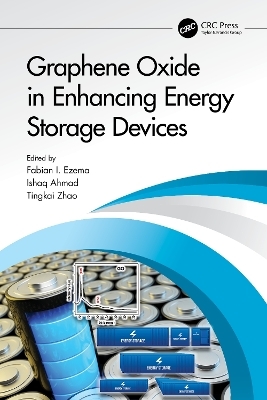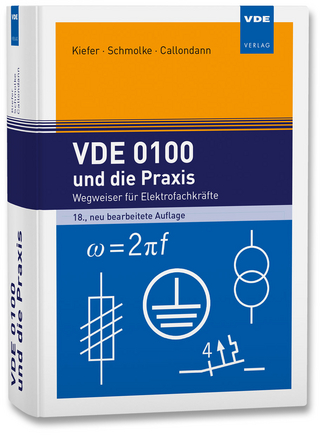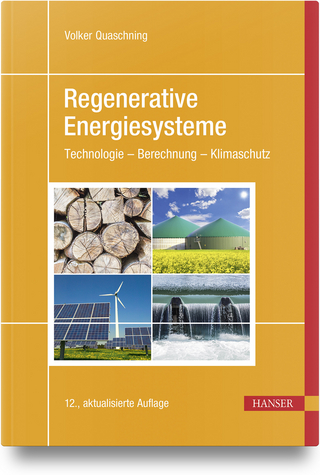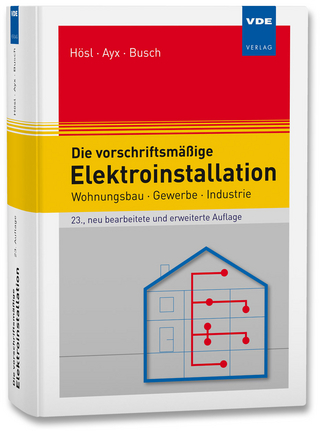
Graphene Oxide in Enhancing Energy Storage Devices
CRC Press (Verlag)
978-1-032-10410-2 (ISBN)
This book provides a broad review of graphene oxide synthesis and applications in various energy storage devices. The chapters explore various fundamental principles and the foundations of different energy conversion and storage devices with respect to their advancement due to emergence of graphene oxide, such as supercapacitors, batteries and fuel cells. This book will enable research towards improving the performance of various energy storage devices using graphene oxides and will be a valuable reference for researchers and scientists working across physics, engineering, and chemistry on different types of graphene oxide-based energy storage and conversion devices.
Features
Edited by established authorities in the field, with chapter contributions from subject area specialists.
Provides a comprehensive review of the field.
Up to date with the latest developments and cutting-edge research.
Fabian I. Ezema is a professor at the University of Nigeria, Nsukka. He earned a PhD in Physics and Astronomy from the University of Nigeria, Nsukka. His research focused on several areas of Materials Science, from synthesis and characterizations of particles and thin-film materials through chemical routes with emphasis on energy applications. For the last 15 years, he has been working on energy conversion and storage (cathodes, anodes, supercapacitors, solar cells, among others), including novel methods of synthesis, characterization and evaluation of the electrochemical and optical properties. He has published about 180 papers in various international journals and given over 50 talks at various conferences. His h-index is 21 with over 1500 citations and he has served as reviewer for several high impact journals and as an editorial board member. TingKai Zhao is a full professor at the School of Materials Science and Engineering of the Northwestern Polytechnical University, Xi'an, China. Prof. Zhao obtained his PhD degree from Materials Science and Engineering of Xi'an Jiaotong University (XJTU) in 2005 and is now the vice-director of the Shaanxi Engineering Laboratory for Graphene New Carbon Materials & Applications. His researcher topics are: the synthesis of graphene, carbon nanotubes (single-wall, multi-wall CNTs and amorphous CNTs), flexible graphite, 2D nanomaterials, the growth mechanism, and applications of carbon nanomaterials in composites, energy conversion (solar cell, supercapacitor and Li-ion batteries), smart device and biosensors. He has published 2 English books, 10 patents more than 100 academic papers at international journals including Nanoscale, Journal of Power Sources, Journal of Alloys and Compounds, Carbon, Scientific Reports and Applied Physics Letters et al., and also served as these Journals' reviewers. He was awarded the first prize of the science and technology of Shaanxi province (2013). Prof. Ishaq Ahmad currently holds the positions of Director General, Centre of Excellence in Physics, National Centre for Physics, Islamabad. He obtained his PhD of Engineering in Nuclear Technology and Applications in Materials Science from Shanghai Institute of Applied Physics,Graduate University of CAS (ChineseAcademy of Science), Beijing, China. He has co-authored over 180 research papers ininternationally reputed journals and contributed 6 books and 8 book chapters in reputed publishers. He supervised several Master’s, PhD, and Postdoctoral local and abroad students. His research interests are focused on ion beam applications in materials/nanomaterials,synthesis of nanomaterials/thinfilms and ion beam analysis of materials. He wasTWAS- UNESCO-iThemba LABS research Associate from 2014 to 2016. He has established international nano center called “NPU-NCP Joint International Research Center on Advanced Nanomaterials & Defects Engineering” at Northwestern Polytechnical University, Xi’an, Shaanxi, China with the collaboration of Prof. Dr.Zhao Tingkai. He has many awards and hours on his credit.
Chapter 1. Elementary Concept of Graphene Oxides Additive in Nanoscience and Nanotechnology Chapter 2. The Role of Graphene Oxide in Ehancement of Working Principle of Dielectric Capacitors as Energy Storage Device. Chapter 3: Graphene - An Energy Storage Material. Chapter 4: Recent Advances in Graphene Oxide Based Fuel Cells. Chapter 5- The Prospects of Graphene Oxide (GO) in Improving Efficiency of Energy Storage Devices. Chapter 6- Recent Progress in Graphene Water Purification and Recycling Using Energy Storage Devices.. Chapter 7- Lithium Ion Battery (LIBs) Performance Optimization using Graphene Oxide. Chapter 8- Effects of Addition of Graphene Oxide on Energy Density of Supercapacitor. Chapter 9- Application of Graphene Oxide in Fuel Cells Fabrication and Performance Optimization. Chapter 10- Role of Graphene Oxide (GO) in Enhancing Performance of Energy Storage Devices. Chapter 11: The Science of High Energy Graphene Oxide-Based Materials for Hybrid Energy Storage Applications. Chapter 12: Recent Advances in Composites of Mixed Transition Metal Oxides and Graphene-Oxide Based Anode Materials for Lithium-Ion Batteries. Chapter 13: Flexible Supercapacitors Based on Graphene Oxide. Chapter 14: Graphene-Oxide Application for Flexible Energy Storage Devices. Chapter 15: Effect of Carbon Addition as an Active Material in Fabrication of Energy Storage Devices.
| Erscheinungsdatum | 05.10.2022 |
|---|---|
| Zusatzinfo | 13 Tables, black and white; 51 Line drawings, black and white; 38 Halftones, black and white; 89 Illustrations, black and white |
| Verlagsort | London |
| Sprache | englisch |
| Maße | 156 x 234 mm |
| Gewicht | 557 g |
| Themenwelt | Technik ► Elektrotechnik / Energietechnik |
| ISBN-10 | 1-032-10410-4 / 1032104104 |
| ISBN-13 | 978-1-032-10410-2 / 9781032104102 |
| Zustand | Neuware |
| Informationen gemäß Produktsicherheitsverordnung (GPSR) | |
| Haben Sie eine Frage zum Produkt? |
aus dem Bereich


